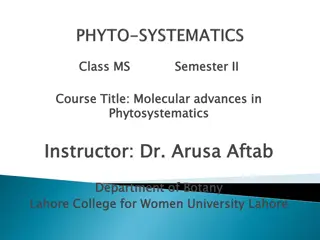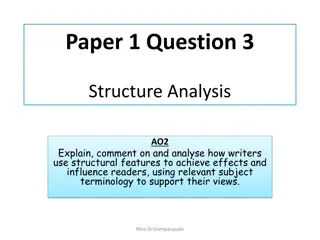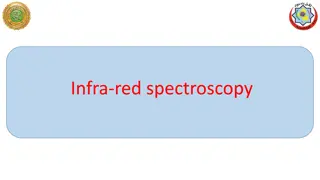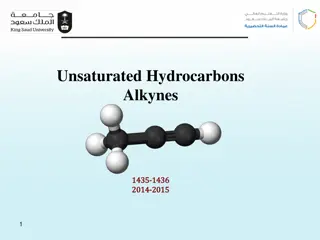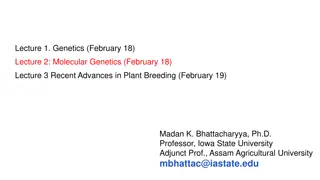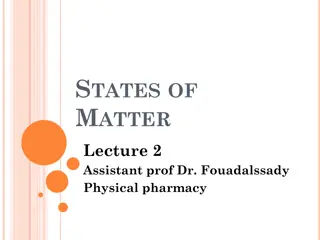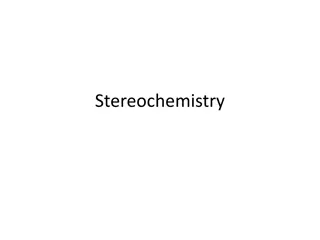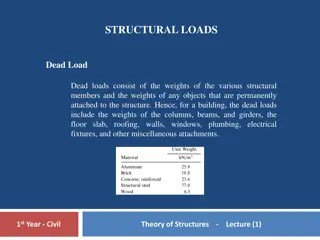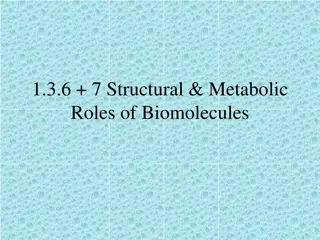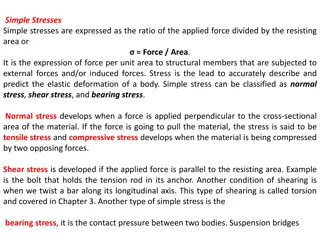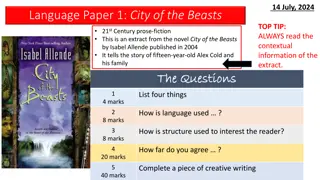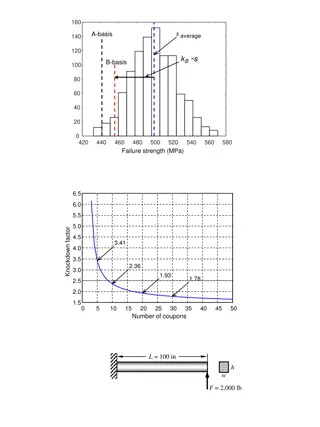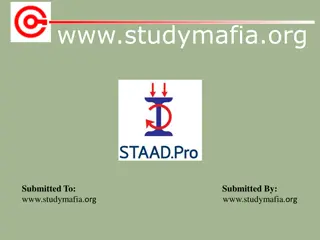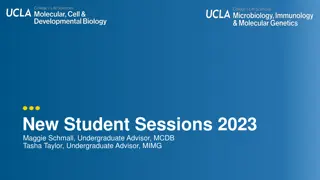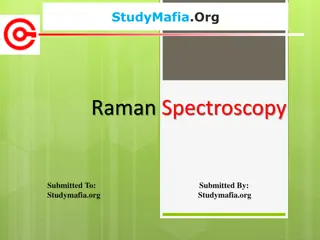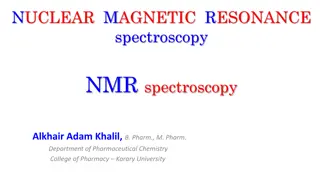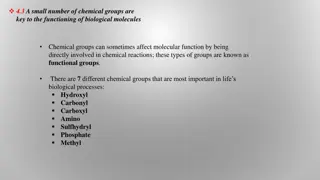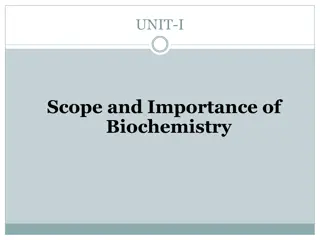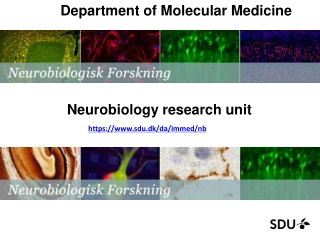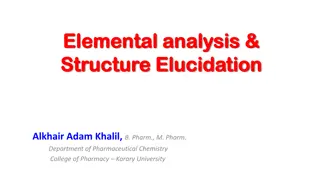Understanding Structural Information in Phytosystematics: A Molecular Perspective
Exploring the significance of taxonomic characters in molecular advances of phytosystematics, this class delves into the role of structural attributes in determining relationships between taxa. From considering gross morphological characters to analyzing morphological characters under microscopes, the course emphasizes the importance of detailed observation and classification techniques. By studying variations in morphologies and identifying homologous structures, students gain insights into evolutionary relationships within plant species.
Download Presentation

Please find below an Image/Link to download the presentation.
The content on the website is provided AS IS for your information and personal use only. It may not be sold, licensed, or shared on other websites without obtaining consent from the author. Download presentation by click this link. If you encounter any issues during the download, it is possible that the publisher has removed the file from their server.
E N D
Presentation Transcript
STRUCTURAL INFORMATION Class MS Semester II Molecular Advances in Phytosystematics Instructor: Dr. ARUSA AFTAB Department of Botany LAHORE COLLEGE FOR WOMEN UNIVERSITY LAHORE
STRUCTURAL INFORMATION
STRUCTURAL INFORMATION Taxonomic characters are the taxonomic attributes that can be used to provide the evidence from (the phylogeny) inferred. Kinds of structural taxonomic characters include: vegetative characters, morphological and anatomical characters, mature and developmental characters. which between relationships taxa are and reproductive
Modern taxonomists consider that the gross morphological characters sufficient to provide means of differentiation in determining the genetically and evolutionary relationship between taxa. Baily (1949) has said, If a truly natural classification is to be attained, it must be based upon the harmonization of evidence from all organs, tissues and parts. are not always analysis and the
MORPHOLOGICAL CHARACTERS Morphological the framework for taxonomy and they have been used extensively in the preparation systems, diagnostic keys etc. The morphological characters are easily observable, to analyse these characters no need of sophisticated laboratory arrangements. characters provide of classification
A microscope, microscope is enough to study these characters. Well-knit terminologies are used to describe variations in morphologies. It is often argued that exomorphic characters are less important than the endomorphic characters. hand lens or or dissecting a possibly light or other
Morphologist examines structures in many different plants of the same or different species, comparisons and formulates ideas about similarities. When structures in different species are believed to exist and develop as a result inherited genetic pathways, those structures are termed homologous. then draws of common,
For example, the leaves of pine, oak, and cabbage all look very different, but share certain basic structures and arrangement of parts. The homology of leaves is an easy conclusion to make. Plant morphology studies plant structure at a range of scales (smallest scales are ultra structure and structural features of cells with the aid of electron microscope and optical microscope) At this scale, plant morphology overlaps with plant anatomy as a field of study.
ANATOMICAL CHARACTERS Anatomical taxonomy for the identification of plants, establishing genetic relationships and solving taxonomic disputes. Anatomical characters are conserved (do not change) and stable. Anatomical characters systematics are trichomes, epidermal features, anatomy, stem anatomy, cambium and wood anatomy. features can be used in used in plant and nodal stomata anatomy, leaf
For example, Characters of trichomes such as glandular, non- multicellular, shape and size are used to compare closely related taxa. The SEM features of stomata and epidermis are used for comparison. Some families are specific for their stomata such as: Anomocytic stomata Ranunculaceae Anisocytic stomata in Brassicaceae Paracytic stomata in rubiaceae Graminaceous stomata in poaceae glandular, unicellular,
The sunken stomata in plants indicates its xerophytic habitats. Leaf anatomy: is extensively used in the systematics of the cyperaceae family. Characters of leaf taxonomy are: The gross anatomical leaf(dicot and monocot). Structural variability: features of mesophyll, bundle sheath, hydathodes, kranz anatomy, foliar nectaries and stomatal crypts and abscission. anatomy in plant structure of the glands, features oil glands, of leaf
Three anatomical characteristics: Unilacunar node: a node with one lacuna of leaf e.g Nerium, Calotropis. Trilacunar node: a node with 3 lacunae or leaf gaps e.g Azadirachta. Multilacunar node: a leaf with many lacunae or leaf gaps e.g Rumex, Polygonum. Stem anatomy include features of epidermis, hypodermis, distribution sclerenchyma, piths, example, Bicollateral vascular bundules in cucurbitaceae Anccessory cortical and medullary bundles in Nyctaginacae different types of nodes based on 1. 2. 3. of collenchyma, region. storage For
Sclereids: nature, type and distribution of sclereids and fibers significance, For example Monocot fibers are hard fibers (coir, musa) Dicot fibers are soft fibers (jute) Cambium: formation of secondary cambium, storied vs non storied cambium. Wood anatomy: adulteration in medicinal plants Features of wood used in systematics are vessels, wood parenchyma, storied structure have taxonomic is used to detect Ray system,
REPRODUCTIVE CHARACTERS Reproduction in flowering plants involves a complex series of events, beginning with floral induction and ending with germination of seeds. Characters of reproductive cycle, especially those of the flower, but also those of embryology, pollen and other features, are of great traditional utility in taxonomy. Certain generalizations can be made with regards to the characters found to be most useful in certain taxa, or the level of conservativeness of certain characters.
For bracts sepals and petals are important, in the Asteraceae inflorescence, bracts and general flower types and in Fabaceae the stamens and carpels. Broad pattern of structure fruits and seeds is in general taxonomic criterion (superficially similar fruits or seeds sometimes being found in only remotely related groups), they are often of supreme importance. example in Rannanculaceae, the and poaceae the a less reliable
In such large families as the Brassicaceae and Apiaceae, for example, the fruits provide the most useful characters of all, and they are scarcely less important in the Rosaceae. In such families number of special terms are used to describe variation of the fruits. Similarly, seeds are important in certain families such as caryophyllaceae. Seed structure produces criteria at all levels of the hierarchy. taxonomic
VEGETATIVE CHARACTERS In higher plants vegetative characters are often looked upon a risky evidence, because there are many cases where superficially similar morphological characters are found in quite unrelated plants. Similar growth- habitat (e.g. cactus-like plants, broom-like plants, tress) or leaf shapes (e.g. palmate-lobed, compound pinnate) are good example.
Many example the moss Andreaea, which is similar to the true mosses vegetatively but to sphagnum on capsule characters. other examples could be given for
DEVELOPMENTAL CHARACTERS Developments is the progression from earlier to later stages in maturation e.g. a fertilized egg develops into a mature tree, its is the process whereby tissues, organs and whole plants are produced, its involves growth, acquisition of form and structure), and differentiation. So developmental criteria in taxonomy. morphogenesis (the stages are good
The life cycle of plants is a good example to study developmental features of sporogenesis, fertilization and embryogenesis in flowering plants. characters such as gametogenesis,
MATURE CHARACTERS Mature plant cells can be stimulated under certain condition to divide and differentiate again. This happens when tissues are wounded , as when branches break or leaves are damaged by insects. The plant repair itself parenchyma cells in vicinity of the wound, making cell like those physiologically similar cells This continuous growth results in: Two general groups of tissues, primary and secondary Two body type, primary and secondary apical and lateral meristems by differentiating injured or else


